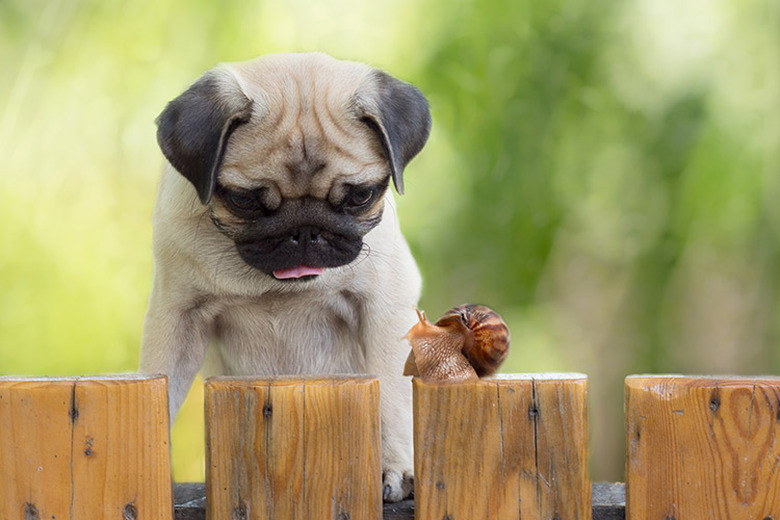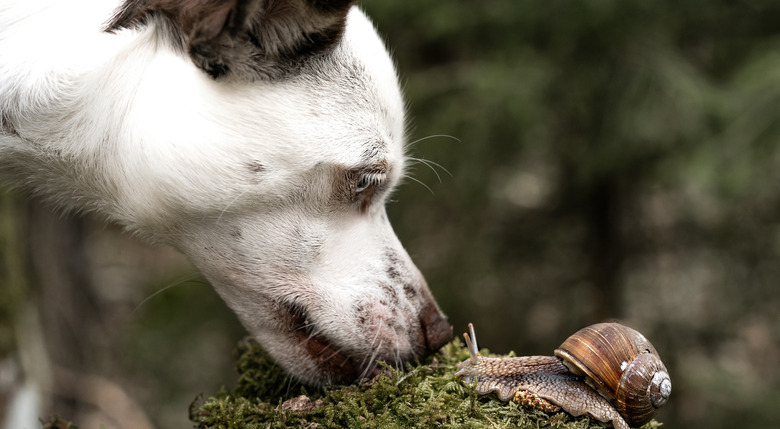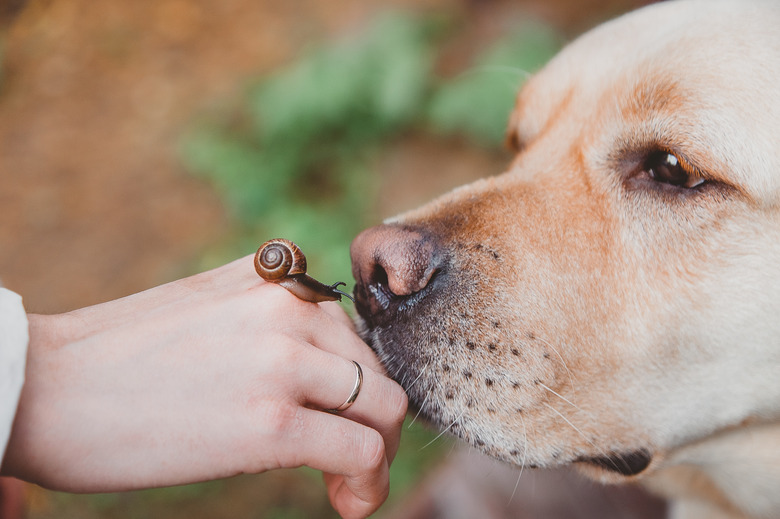How To Stop A Dog From Eating Snails
Dogs eating snails is not uncommon, especially if you have a large number of these pests in your yard and garden. Typically, dogs don't seek out and eat snails, but they frequently eat grass or food that the snail was attracted to, so minimizing snail habitats and teaching your dog some commands can prevent the problem. While the snail itself isn't harmful, it can be a carrier of a dangerous parasite that can infect your pup.
Problems with dogs eating snails
Problems with dogs eating snails
Slugs and snails are hosts of lungworm parasites. If your dog eats a snail or slug or licks the slime left behind, he can contract the parasite. The parasite moves into your dog's respiratory tract, causing serious problems.
There are many species of lungworm that can be passed directly between dogs, but the species Crenostoma vulpis needs an intermediate host, commonly snails and slugs, to complete its life cycle. Symptoms may vary depending on the type of lungworm but may include coughing, wheezing, difficulty breathing, and exercise intolerance. Take steps to stop dogs from eating snails so they don't contract this parasite.
Stop dogs from eating snails
Stop dogs from eating snails
Prevent a dog from eating snails by minimizing snails in your yard and doing some training with the dog. Since dogs don't commonly eat snails for the sake of eating snails, it is important to keep them out of your yard as much as possible.
Avoid throwing into your garden food scraps or other material that may attract snails and be sure to bring your dog's toys and bowls inside at night when snails are most active. This ensures your pup won't accidentally eat a snail or lick the slime from a contaminated toy.
Obedience training also plays a large role in stopping your dog from eating snails. Be sure to use positive reinforcement methods and teach commands such as "come" and "leave it" to draw your pup away from snails and slugs. Monitor your dog in the yard if you have a lot of snails and distract him with safe toys and play.
Snail pest control
Snail pest control
If slugs and snails are a big problem in your yard, you might consider using a chemical pest control to kill them, but finding pet-safe options can be a challenge. The most common pesticide for snail bait contains the ingredient metaldehyde, which is extremely toxic to dogs. Since the bait commonly uses something tasty to slugs, such as molasses, this makes snail bait dangerous because your pup will also enjoy the tasty treat.
Symptoms of poisoning include vomiting, drooling, a stiff gait, and increased heart and breathing rates. Later symptoms include a high fever, organ failure, lethargy, muscle tremors, and seizures. Metaldehyde poisoning can be fatal without prompt treatment.
A safer snail bait option is one containing iron phosphate. Follow all of the package instructions and safety warnings and be aware that these snail baits take longer to work than other chemical baits.
Lungworm prevention and treatment
Lungworm prevention and treatment
If you have a lot of snails and slugs in your yard, speak with your vet about a preventative medication that is effective against lungworms. If your dog eats a snail and isn't on a preventative or if she is showing symptoms of lungworms, take her to the vet. Your vet may conduct a variety of tests to diagnose lungworms, such as lung X-rays and testing stool samples.
Treatment is a course of antiparasitic medications, such as ivermectin or fenbendazole. The amount of treatment needed depends on the severity of the infection and symptoms. In severe cases, your dog may need additional supportive care, such as oxygen therapy.


